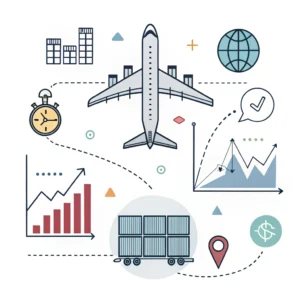What Does DAP Mean in Shipping Terms?
DAP (Delivered at Place) is an internationally recognized Incoterm (International Commercial Term) where the seller assumes maximum responsibility for transporting goods to a mutually agreed destination, typically the buyer’s premises. Under DAP, the seller covers all costs and risks until the goods arrive at the designated location. This term applies to all transport modes (sea, air, road, rail). However, the buyer handles import clearance, duties, and unloading at the final destination.
A common misconception is that DAP eliminates additional buyer costs. While the seller manages most logistics, buyers must still budget for:
- Import taxes and duties
- Customs brokerage fees
- Freight insurance (optional but recommended)
- Unloading expenses at the destination
DAP replaced older Incoterms like DAF (Delivered at Frontier), DES (Delivered Ex Ship), and DDU (Delivered Duty Unpaid), which were phased out in 2010 with the introduction of Incoterms® 2010.
Responsibilities Under DAP Agreements
Seller’s Responsibilities
- Export Packaging: Ensuring goods are securely packed for international transport.
- Loading at Origin: Covering costs to load goods onto transport at their facility.
- Transport to Export Point: Arranging and paying for delivery to the port/place of export.
- Export Compliance: Handling export duties, taxes, and customs clearance in the origin country.
- Origin Terminal Charges (OTHC): Paying fees for handling at the origin terminal.
- Freight Costs: Covering transportation to the destination port/place.
- Destination Terminal Charges (DTHC): Paying handling fees at the destination terminal.
- Final Delivery: Transporting goods from the destination terminal to the buyer’s specified location.
Buyer’s Responsibilities
- Unloading at Destination: Covering costs to unload goods (e.g., hiring equipment or labor).
- Import Compliance: Paying import duties, taxes, and customs clearance fees.
- Freight Insurance: Optional but advised; buyer assumes risk if uninsured.
- Delays or Additional Fees: Costs due to customs hold-ups or rescheduling.
Key Considerations for DAP Shipments
- Risk Transfer: Ownership and risk shift from seller to buyer once goods are ready for unloading at the destination.
- Insurance Gaps: Sellers often insure goods until delivery, but buyers may need supplemental coverage.
- Clarity in Contracts: Define the exact delivery location (e.g., warehouse gate vs. loading dock) to avoid disputes.
When to Use DAP
DAP suits buyers who:
- Prefer sellers to manage most logistics.
- Have expertise in handling import procedures.
- Seek flexibility in choosing customs brokers or unloading methods.
For sellers, DAP offers control over transport but requires meticulous coordination to avoid terminal delays or unexpected costs.








